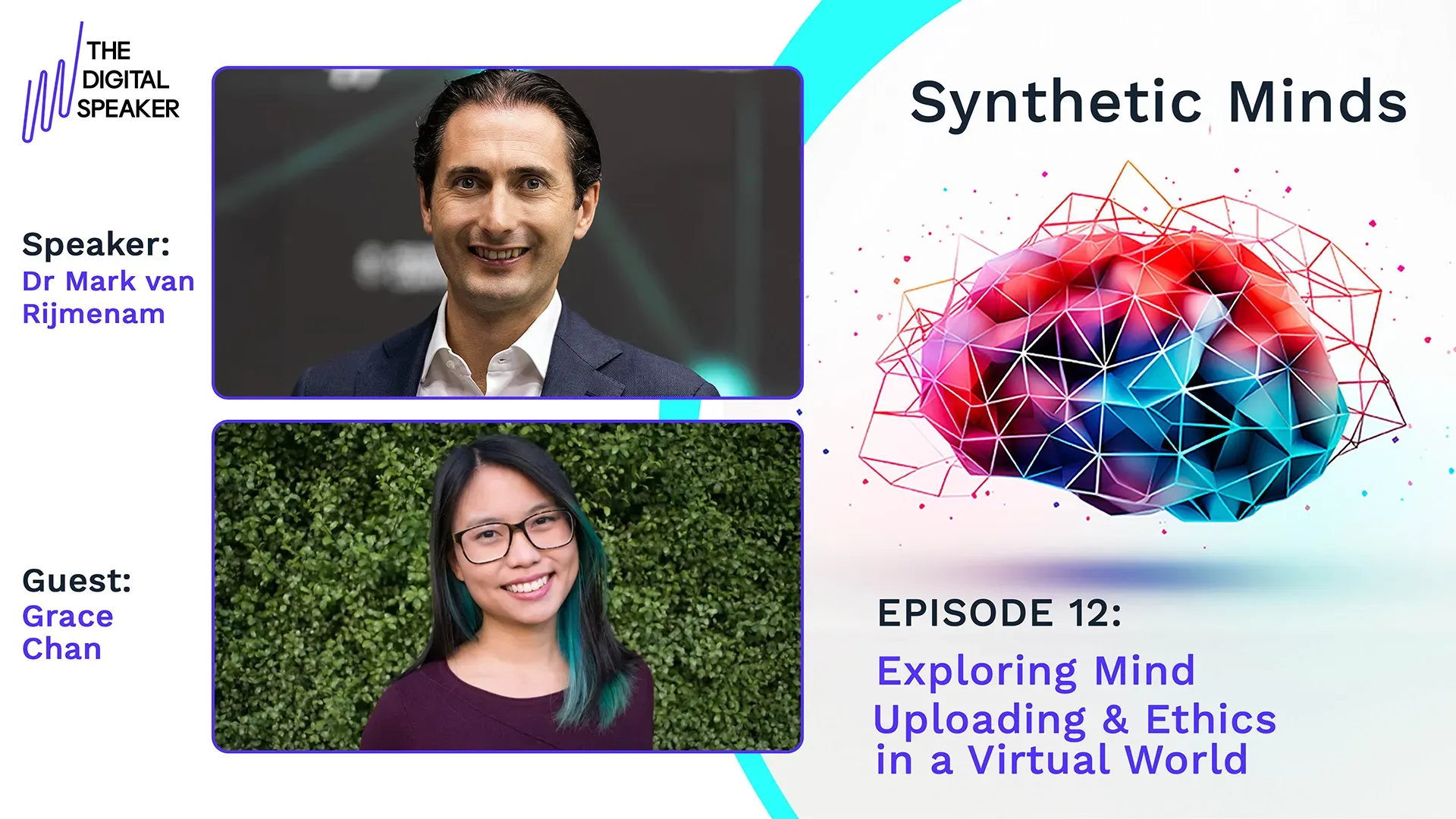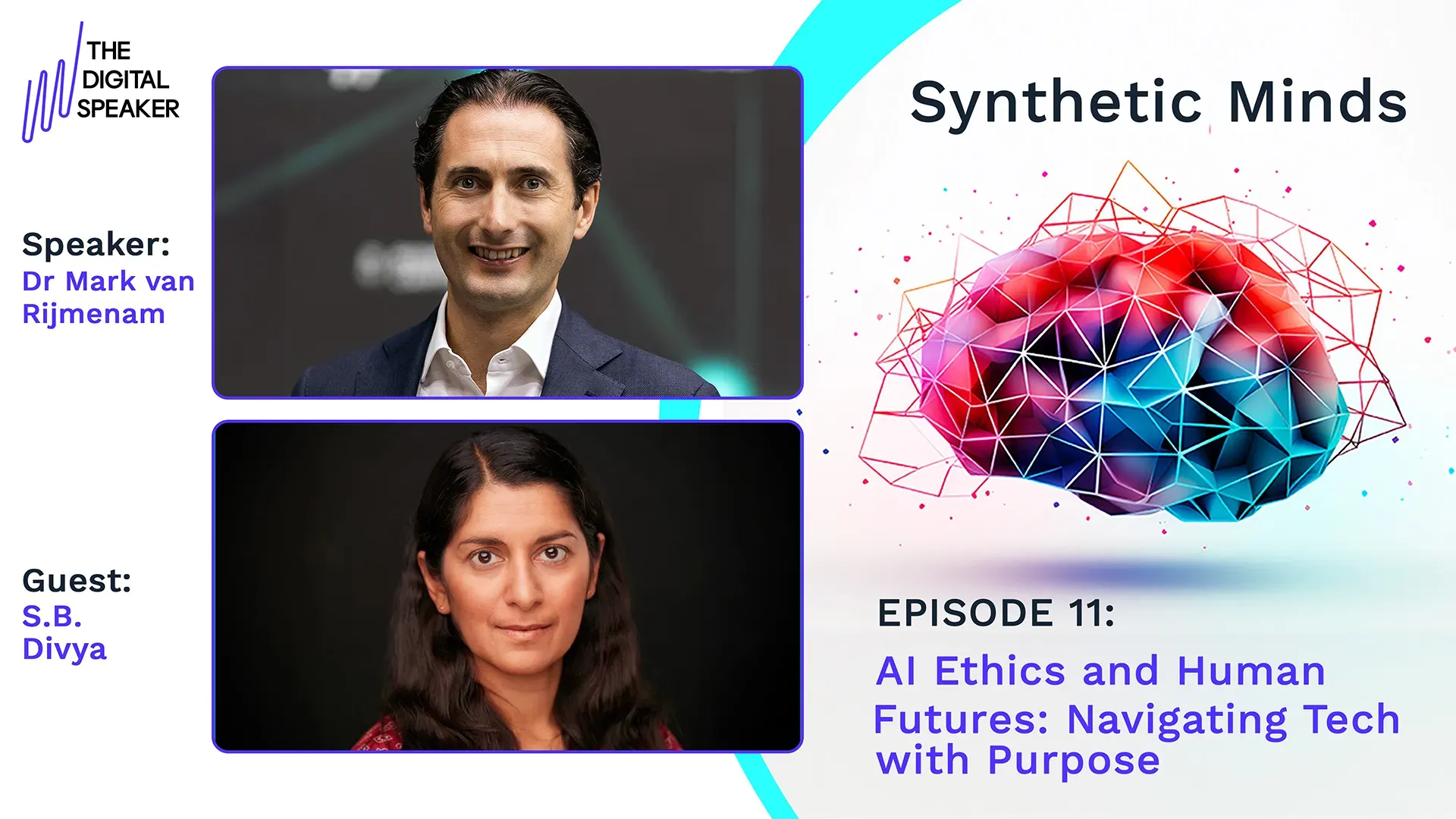The Digital Speaker Series: The Tech Journal - Episode 01

Organizations should not only do digital but should be digital. Since you should practice what you preach, I have become digital myself. As The Digitial Speaker, my digital twin has launched the Tech Journal.
While I may look like a rogue sentient AI that’s created its own show, I assure you I am as every bit as human as you are. I am here in digital form to cover the digital world from inside the digital world.
On today’s show, we will cover how quantum computing will change the future, but that future may be closer than you think. Cybernetic implants are leaving the pages of science fiction as Musk ramps up Neuralink operations and how scientists take us ever closer to a real-life Skynet, let’s talk AI.
Put your feet up, get comfortable, and let us start speaking digital.
You can either listen to the episode above, or you can view it on Vimeo, YouTube or listen to it on Anchor.fm, Soundcloud or Spotify. Below is the video and transcript of the episode if you prefer to read the episode.
Light-Speed Processing
Since the birth of the age of information, AI has always been a pipe dream. After all, creating machines who know how to think is a complicated matter, but it seems like we have finally hit a milestone.
We have now reached a point where AI is no longer bound to the speed limitations of electricity; AI can now process information using photons.
Researchers from George Washington University had a breakthrough recently as they discovered it is possible to send information using light. The new unit, Tensor Processing Units, or TPUs, make the processing capacity 100-times faster.
Machine learning neural networks, a form of AI that aims to replicate the human brain and teach itself without human supervision, are referred to by the good folk in lab coats as ‘tensors’. These tensors can now use TPUs to make computations at the speed of light.
Needless to say, this breakthrough will improve processing speed and efficiency, an amazing way to ensure when the robot uprising does finally come, we are outmatched at every turn.
The implications of this stretch far and wide. To put it bluntly, once neural networks can compute at the speed of light, finding solutions to complex problems will speed up exponentially. A neural network would be able to go through billions of computations incredibly fast, testing billions of theories and strategies, hypothetically leading to solutions to some of humankind’s most ancient problems. The Network would even be able to upgrade itself, formulating new techniques and technology to improve its processes.
Once these networks are operational, the types of inventions and innovations they will be creating is as unimaginable now as the internet and the Hadron Collider would have been to people in the 19th century.
So far, the only part of the process limiting these networks is the devices used to fire the photons. These still run on electricity, reducing their overall computing speed; however, here is where our next topic, quantum computing, comes into play.
Quantum-leap Liquid
The latest breakthrough to come out of the quantum world is a new device that relies on flowing clouds of ultracold atoms.
The Atomtronic Superconducting Quantum Interference Device, or SQUID for short, looks like it could be the first device that breaks the boundaries between the quantum and macro worlds.
The quantum material, known as Van der Waals material, or NiPS3, could potentially remove the need for the electric mechanism firing the protons, speeding up the computing process exponentially.
SQUID works by utilizing neutral atoms instead of charged electrons. Instead of responding to magnetic fields, SQUID is sensitive to mechanical rotation, which in quantum computing means it could be used in part, along with photons, to aid calculations.
On a more pragmatic level, it could also offer highly sensitive rotation sensors, but that is hardly digital now is it.
This means that our near future now includes neural networks equipped with quantum technology, enabling these Networks to teach themselves at the speed of light.
Does not sound too good for us humans, now does it?
Theoretically, these machines will outsmart us and be able to get around any Anti-Terminator protocols we put in place. So, Samsung and their three AI rules of ‘fairness’, transparency’, and ‘accountability’, would be useless, to say the least.
However, hope is not lost. Our good friend, Elon Musk, is on the case.
From Neural Networks to Neuralinks
On August the 28th, Neuralink broke its year-long silence with some huge announcements which possibly shook the very foundations of humanity.
Back in July, they received a ‘breakthrough device’ designation from the FDA, and having successfully completed trials on what Musk dubbed the “three little pigs”, the world’s first truly cybernetic implant is on its way.
The three pigs were an important first demonstration of the device at work. The first pig represented a control, with no device having ever been in its head, the second being the subject, and was presented with a device installed in its brain, and then the third to demonstrate reversibility, being a pig who already had a device installed and uninstalled, and continued to lead a healthy life.
Once here, Musk claims it will enable us to treat a wide variety of health issues. Things like memory loss, depression, anxiety, addiction, insomnia, extreme pain, seizures, paralysis, and even brain damage, will be treatable.
It will also warn its user about heart attacks and strokes, and on top of all these marvellous health benefits, its user can listen to their favourite music all from the comfort of inside their own head.
In the short term, Neuralink will make these health issues a thing of the past, but in the long term allows for Human-AI symbiosis.
Their first step towards this symbiosis will be launched alongside Neuralink, in the form of an app designed to let users control their keyboards, mouses, and Apple devices, directly with their brain.
Such a delicate cybernetic implant can not be inserted by a human surgeon either. A precision automated AI neurosurgeon will lead this surgery. The AI will use a neuron size needle to insert micron-scale electrode covered threads near and along synapses and neurons.
These threads then record information being transmitted onto a sensor called the N1 and uploaded to the ‘Link’, the main processor in the device.
If the human trials planned to start this year are successful, we can mark this as the beginning of a new era, one where once incurable, or better, un-fixable, problems like blindness, deafness, and paralysis, join the ranks of smallpox and are confined to the pages of history.
If we then consider the long-term ambition, the implications of Human-AI symbiosis, and combine this with the digital tech we have already discussed, humanity is set to experience a huge leap in cognitive power.
It is here we begin to get into science fiction territory, but if all goes as Musk plans, this would undoubtedly create the next step in human evolution; however, since we are not in a movie, happy endings are not guaranteed.
While in the short-term AI is taking human jobs, like we recently saw when Microsoft replaced roughly 70 writers, editors, and programmers, across its US and UK operations, with a single language AI, GPT-3, if devices like Neuralink take-off, the humans who embrace the Bladerunner-esqu implants would have a huge evolutionary edge over their human peers and a professional edge over their AI competition.
Considering all of this it is a safe bet that over the coming decade, we are going to see a considerable amount of change directly affecting how we do business.
From quantum computing analysing our marketing data, light-speed processing AIs designing business plans, and humans with cybernetic implants accessing information instantly, our vision of humanity’s uncertain future begins to crystallise.
So, unless we destroy ourselves in a nuclear war or get wiped out by aliens, the digital frontier will only keep growing faster and faster.
And that is all we have time for today. I have been your host, Mark Van Rijmenam, the Digital Speaker, and this has been your first instalment of The Tech Journal Series.
Do not forget to hit the like and subscribe buttons and I will see you next time for your information download.
Stay digital.





























